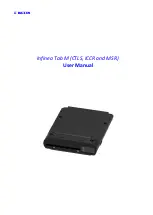
Page 4
Installation and Maintenance Manual form 185
FIG.6 Side mounted coolers
1.5.5
Copper-nickel units can be bent to conform to
the hull. The bending can be done at the yard or
by R. W. Fernstrum & Company. Contact us if you
are considering bending a unit. See Section 4.1 –
Bending A GRIDCOOLER® Keel Cooler. The bending
of aluminum keel coolers is not recommended.
1.6
MOUNTING CONSIDERATIONS –
DISPLACEMENT VESSELS
1.6.1
Owners of vessels with displacement hulls moving
at less than 10 knots may find an external mounting
with fairing blocks to their advantage; provided
there isn’t much chance of the unit being damaged
in their operating environment
1.6.2
When recessing the unit into the side of the hull
for generator sets and/or equipment operating at
dockside, angle the top of the recess box to improve
convection current over the cooler. See Figure 7.
FIG.7 Side Mounted Recess.
NOTE:
Recess box with angled top suggested for
generator set and equipment operating at
dock side only. NOT required for propulsion
engines.
1.6.3
When installing a multiple-pass unit on an incline,
make sure that the nozzles are at the high end to
avoid air entrapment. See Figure 8.
1.6.4
If coolers must be installed with the nozzles at the
low end, special units can be ordered with additional
vents in the stud end of the cooler.
FIG.8 U-Flow unit with E1 OPTION end mounted
anodes mounted on rake of vessel with
nozzles positioned to avoid air entrapment.
1.6.5
If side plates and fairing blocks are used, make sure
that the side plates are scalloped (notched) out so
they will not entrap water. Fairing blocks are most
effective when installed with a 4 to 1 slope. See
Figures 1 & 5.
1.7
MOUNTING CONSIDERATIONS – PLANING
VESSELS
1.7.1
We recommend using a recess on planing hulls and
vessels moving at 10 or more knots.
1.7.2
High speed applications (10+ knots) can reduce the
1-1/2 in. clearance recommendation in section 1.5.3
to 1/2 in. minimum due to increased raw water flow
over the cooler at high speed.
1.7.3
High speed applications and others that use E1
OPTION™ coolers should take into consideration the
removal and replacement of anodes and drain plugs
when sizing the length of a recess. See Figure 2.
1.8
BONDING OR ISOLATION TO MINIMIZE
CORROSION
1.8.1
It is recommended that the installer consult with a
corrosion engineer to review the corrosion protection
system of the vessel to determine the best mode of
installation for their particular situation.
1.8.2
Typically, it is common practice to isolate the keel
cooler from the hull. This ensures that the antifouling
property of the copper-nickel is at full potential.
However, there are other variables that may affect
the decision whether to isolate or bond the unit.







































